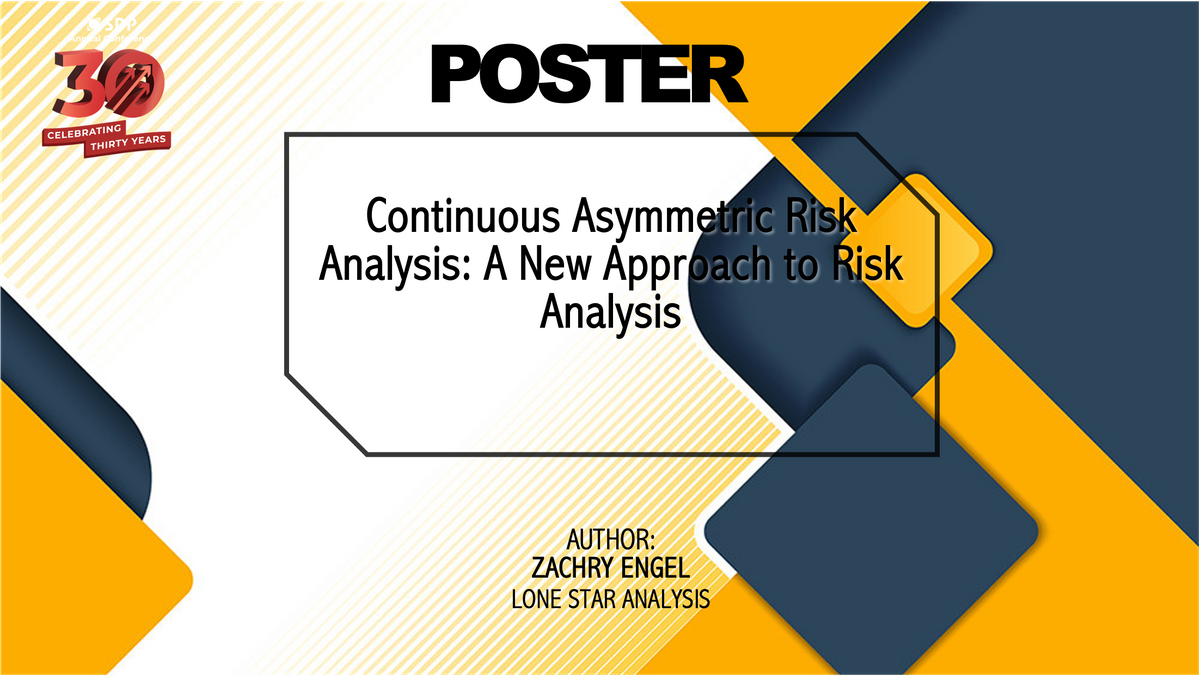
Continuous Asymmetric Risk Analysis: A New Approach to Risk Analysis
Author: Dr. Zachry Engel (Lone Star Analysis)
Abstract:
The current Risk Reporting Matrix, or simple risk matrix, is a tool used by many decision-makers, including those in the Department of Defense. The risk matrix is often used due to its simplicity to understand and create. However, it is a tool that is not well suited for proper decision making and risk analysis. The risk matrix is built using two 5-point Likert scales, one to represent the likelihood of an event and one for its consequence. This gives the user of the risk matrix only 25 possibilities for a likelihood-consequence combination. This forces users to make subjective decisions and interpretation of the risk matrix since the “risk-value” generated by the risk matrix is either a single number or a pair of numbers to represent the combination of likelihood and consequence. Furthermore, the risk matrix does not allow its user to evaluate the impact of mitigation and prevention measures to reduce the likelihood and impact of the risk event. For these reasons, the risk matrix should not be used as a tool for decision making or risk analysis.
To fix these issues, we introduce the Continuous Asymmetric Risk Analysis (CARA) tool as a replacement for the risk matrix. Similar to the risk matrix, CARA considers the overall risk of an even by evaluating the likelihood and consequence of the event. However, CARA eliminates the issues that a discrete grid creates by using a continuous gradient of possible options for likelihood and consequence. By allowing for any continuous value, CARA eliminates the subjectivity found in a risk matrix. CARA also allows its user to evaluate the variability of the event by creating asymmetric confidence intervals around a nominal value to show the variation of the risk event. Finally, unlike the risk matrix, CARA allows its user to consider the impact of prevention and mitigation measures by evaluating how the prevention and mitigation measures reduce the likelihood and impact of an event. By combining all these features, CARA allows for more precise, objective, and informative decision making and risk analysis.
This presentation will describe how CARA identifies risk and creates asymmetric confidence intervals by evaluating risk scenario to demonstrate its efficiency in the creation of novel and informative risk assessment. This paper will demonstrate CARA’s capability to evaluate risk using objective data or Subject Matter Expert (SME) opinions for more flexibility. This paper will also demonstrate how the risk level and variability is reduced as mitigation and prevention steps are added.
Industry
CARA can be applied to any industry that wishes to evaluate risk or have higher quality decision-making. While the potential applications of CARA are virtually endless, it is currently used for government work, manufacturing, and risk analysis.
Session
CARA fits best into the Innovation section of the 2024 SDP Annual conference. In particular, CARA addresses the issues of decision quality frameworks for innovation, risk assessment and mitigation in innovation, and data-driven decision making.
